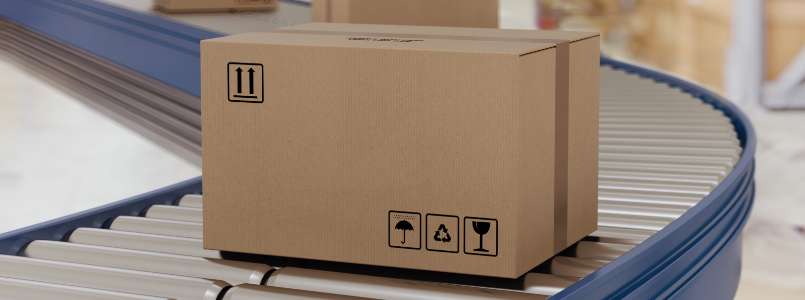
What Is a Conveyor Guide Rail System?
Conveyor guide rails ensure the smooth movement of products along your conveyor system. As items travel to their final destination, rails guide your products without the need for manual intervention.
Recent technological innovations have resulted in adjustable conveyor side rails, which manage various products without using multiple conveyor belts. This reduces costs and accelerates factory production runs. The adjustable guide rail system has revolutionized the standard guide rail in factories across the country.
Conveyor guide rail systems are comprised of several conveyor components:
- Aluminum or Steel Rails
- Rail Sleeves
- Holders
- Rail Bracket/Holders
- Connector Plugs
Conditions That Cause Conveyor Guide Rail Systems to Fail
Given the amount of punishment that conveyor guide rails take, it’s no wonder they wear out over time. Some of the factors that hasten their demise include:
- Chemicals: Over time, the cleaning agents used on your guide rail system can begin to break down the plastic in your guide rails.
- Friction: The constant rubbing of products against guide rails can result in the deterioration of conveyor parts.
- Foreign Particles: Damage to the guide rail can result from contact with abrasive materials like sand, sugar, grinding particles, broken glass, etc.
- Multiple Bends: Having several vertical and horizontal plane bends in conveyor systems can accelerate wear and tear.
Conveyor Guide Rail Maintenance
You can get the maximum life out of your conveyor guide rail system by following the manufacturer’s instructions for routine maintenance. For example, you may be directed to check the chain slack, side rails and drive unit at prescribed intervals – then perform any necessary cleaning and maintenance.
Signs of Trouble With Your Conveyor Guide Rails
Conveyor guide rails are robust and adaptable, thanks to their modular system. The individual parts can be adjusted to different operational constraints. While this is a good thing from a production standpoint, one malfunctioning part can impact the whole unit. To diagnose a problem with your conveyor guide rail system, take heed of the following symptoms on your factory line:
- Changeover Efficiency: Is it taking longer to change over rail adjustment between products?
- Production Run Time: Have you noticed an increase in the run time for each product line?
- Start-up Time: Are new product runs taking more time to begin?
- Downtime: Are you making more unscheduled stops than normal?
- Equipment Failure: Are problems with jamming and product damage becoming more frequent?

How Problems Impact Production Line Efficiency
Guide rail systems that are not operating effectively can slow down operations, and the extended periods required to readjust between runs mean increased downtime that negatively impacts productivity. All of this results in product losses and subsequent reduction in revenue. Other areas of the conveyor system may be impacted by conveyor guide rail malfunction:
- Reduction in the speed and capacity of the conveyor belt. You may notice an increase in belt mistracking, which can cause uneven belt wear and subsequent problems with the tension and balance of the conveyor belt system. In some instances, the belt may completely slip off the track, effectively stopping factory production while repairs are completed.
- Product mishandling. In conveyor transfer systems, as products move from one place to the next, they may get caught in the system, creating a jam or clog that halts the operation. When this happens, products may leave a residue that builds up under the belt, resulting in rollers and pulleys that slow down or stop.
- Other Hazards: The accumulation of certain residues may create toxic fumes or a fire hazard.
Rely on Span Tech When It’s Time for New Conveyor Guide Rail Systems
When conveyor guide rail systems have outlived their productive work life, Span Tech can step in with highly efficient, easy-adjust options for your conveyor system. We proudly serve companies from a wide range of industries, from food production and packaging to pharmaceuticals and cosmetics. For over 30 years, we’ve continued to innovate conveyor systems to provide our clients with modern solutions for product handling. From sorting conveyors to specialty conveyors, Span Tech can create custom solutions for your business. Get in touch today and let us know how we can help you boost factory production!


